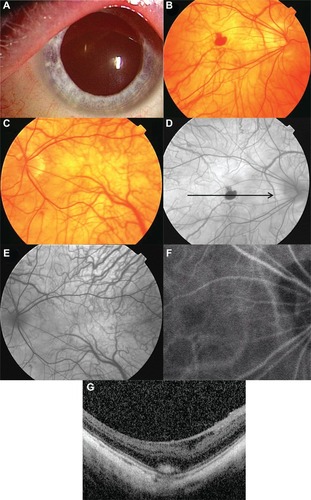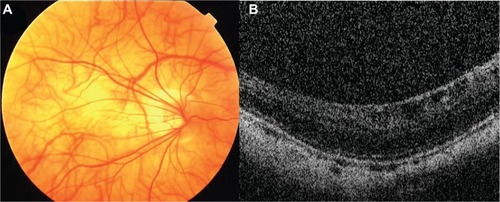Figures & data
Figure 1 Findings in a 48-year-old Japanese man with oculocutaneous albinism. His best-corrected visual acuity was 2/100 with −14.0 diopters in the right eye.

Figure 2 Three months after onset. The patient’s best-corrected visual acuity has not improved.

